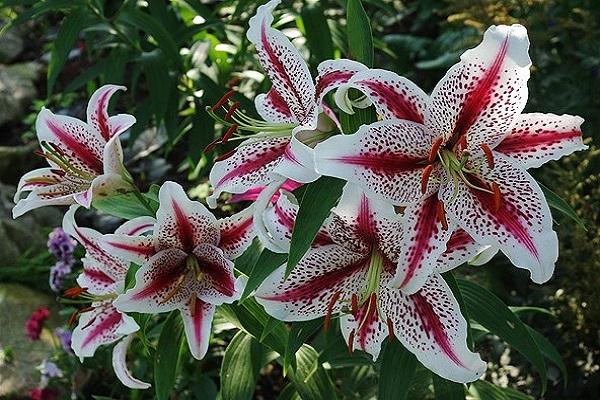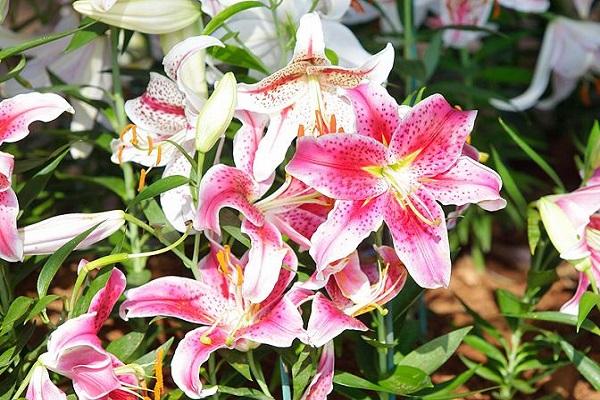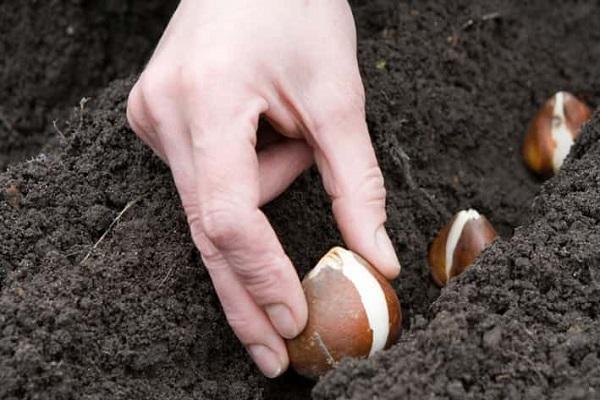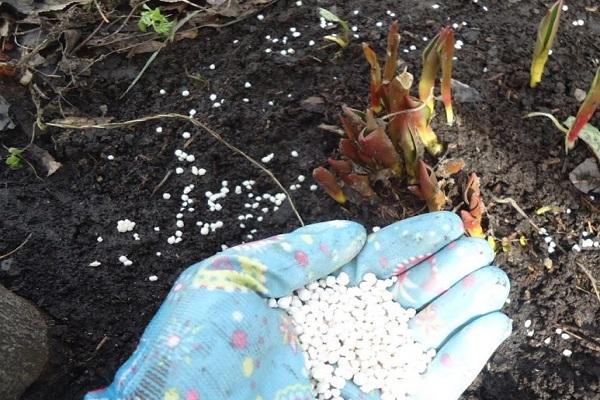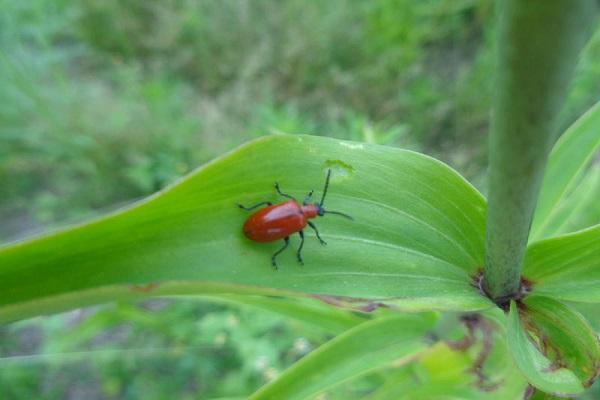Gardeners include incredibly beautiful flowers with a variety of colors and an intoxicating aroma among the advantages of growing oriental lilies in their summer cottage. It’s hard to imagine the second half of summer at your dacha without these beauties. Thanks to the work of breeders, many varieties of oriental, or oriental, hybrids have appeared, which are adapted for cultivation in the difficult climate of central Russia. With proper agricultural technology, plants do not get sick and reward gardeners with huge buds of incredible beauty.
- General description and characteristics of oriental lilies
- Types and varieties of crops
- Advantages and disadvantages
- The nuances of growing a plant
- Time and place of landing
- The soil
- Planting bulbs
- How to properly care for flowers
- Watering and fertilizing
- Shelter for the winter
- Diseases and pests
- Propagation of oriental lilies
- Examples of use in landscape design
General description and characteristics of oriental lilies
The oriental lily has broadly lanceolate leaves located on long petioles. Their inflorescences are spreading, racemose, the flowers can be directed downwards or to the side. The shape of the flowers is turban-shaped, tubular or star-shaped. The shade of the petals is crimson, white, pink.
A special feature of oriental hybrids is a long growing season, so they need a long warm summer. In the middle zone, cultivation is possible, but mandatory shelter for the winter is required.
Types and varieties of crops
Among the hybrids and varieties of oriental lilies, the following are especially popular among gardeners:
- Oriental. It reaches a meter in height, so it is included in the category of large species. The color of its petals on the inside is yellow-white, and the outside is dotted with dots and small pimples. The Oriental lily blooms in July or August, and it exudes a distinct, pleasant aroma.
- Asterion. The height of the hybrid ranges from 40 to 120 cm. When in bloom, the diameter of the buds reaches 22-23 cm. The petals have a creamy white tint and slight waviness. Up to 3 buds grow simultaneously on one peduncle.
- Time Out. Of all the oriental lily hybrids, this is the most unpretentious. The flowers are medium in size (18-20 cm in diameter), with widened petals, on which there are longitudinal yellow stripes. It develops in height up to 120 cm, the flowering period begins in mid-August.
- Star Class. The height of the hybrid is up to 110 cm. It is characterized by flowers 20 cm in diameter, which have a white center and pink edges of the petals.
Advantages and disadvantages
Before planting oriental beauties, be sure to study their strengths and weaknesses in order to avoid mistakes during the growing process.
The advantages of lilies include:
- Spectacular appearance.
- Bright pleasant smell.
- They look good when cut.
- Large selection of hybrids with different petal colors.
Among the shortcomings, pay attention to the following:
- Long growing season.
- Late flowering period.
- The need for additional insulation for the winter.
The nuances of growing a plant
When starting to grow a capricious and heat-loving plant, pay attention to its requirements for location and soil characteristics.
Time and place of landing
It is recommended to plant oriental lilies in the spring, when consistently warm weather has established without the risk of return frosts. This will give young flowers the opportunity to take root in a new place and strengthen their immunity before the onset of cold weather.
Since oriental beauties are mostly tall, a place for them is chosen that is protected from strong gusts of wind, which can break a delicate flower.
An area with light shading is ideal; in the open scorching sun, the petals fade and lose their decorative effect.
The soil
The soil must be fertile and slightly acidic. A good choice would be peaty soil with a small content of leaf humus and sand. Drainage must be provided at the bottom, otherwise the bulbs become infected with fusarium and die.
Planting bulbs
Before planting, the bulbs are treated with any fungicide to protect the plants from fungal diseases. Make small holes in the prepared soil at a distance of at least 20 cm from each other. A shorter distance between plantings will cause flowers to compete for nutritional components.
The bulbs are buried a little, sprinkled with a small layer of sand on top and mulched with sawdust. This will prevent moisture evaporation and protect young plants from weeds.
How to properly care for flowers
Oriental lilies are cared for regularly in open ground, as the flower is delicate and capricious.
Watering and fertilizing
Moistening the soil on which oriental lilies grow is carried out moderately. Flowers do not tolerate excessive humidity and react to it by reducing their decorative appearance and rotting of the bulbs. In cloudy weather, watering is not carried out at all; in extreme heat, moderately irrigate once a week.
Feeding is an essential component of caring for oriental hybrids. For these purposes, it is better to purchase special fertilizers for bulbous plants at a gardening store and follow the instructions on the package when using them.
It is strictly forbidden to use fresh manure to feed lilies. It causes the development of diseases.
Shelter for the winter
Be sure to insulate delicate flowers before the onset of cold weather. Cut the peduncle down to a 10-centimeter stump and pour a bucket of soil on top. Fallen dry leaves are placed on top of it. In regions with severe frosts, it is advisable to cover the top with roofing felt.
Diseases and pests
Of the fungal diseases, gray rot and fusarium are considered the most dangerous for oriental beauties. They develop in damp and cold weather conditions, as well as when lilies are overly moistened. For treatment, fungicidal preparations containing copper are used.
If the plants are affected by viral diseases, the flowers will have to be destroyed so as not to endanger other crops on the site. Among the most dangerous is the tobacco and cucumber mosaic virus. There is no cure.
Dangerous pests include mice and other rodents that love to eat the nutritious bulbs of lilies. Poison is scattered around the plantings in winter, and the snow is trampled down from time to time.
Sometimes flowers are attacked by lily flies, squeak beetles, mole crickets and spider mites. They resort to the help of insecticides - “Karbofos”, “Intavir”, “Decis”.
Propagation of oriental lilies
Oriental beauties are bred in several ways:
- Seeds. The method is not suitable for all varieties and hybrids, and therefore is not popular among gardeners.
- Scales. Several bulbs are separated from a large, healthy bulb and placed in a bag filled with sand, peat and pine litter. They wait for the babies to appear, periodically moistening the substrate and ventilating the scales. Then they are planted in open ground and covered for the first time.
- By dividing the bulb. The procedure is carried out after the end of flowering, young specimens are immediately sent to the beds and are well insulated for the winter.
Examples of use in landscape design
Oriental lilies look beautiful in company with rhododendrons, perennial asters and ground cover plants.

